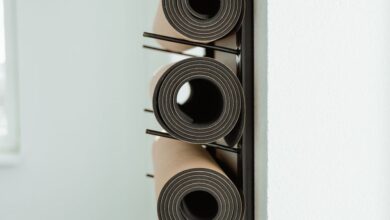How to Choose the Right Foam Roller for Recovery
Foam rolling has gained immense popularity among fitness enthusiasts and athletes alike, serving as a vital tool for muscle recovery and injury prevention. With various types and densities available on the market, selecting the right foam roller can feel overwhelming. Understanding your specific needs and preferences is essential to making an informed choice that will enhance your recovery routine.
Types of Foam Rollers
When diving into the world of foam rollers, you’ll encounter two primary categories: smooth and textured. Smooth foam rollers are ideal for beginners or those who prefer a gentler massage. They provide a uniform surface that evenly distributes pressure across the muscles, making them suitable for general recovery and flexibility work.
On the other hand, textured foam rollers come with ridges, bumps, or knobs that target specific muscle groups more aggressively. These rollers are excellent for breaking up knots and increasing blood flow to sore areas. If you’re an experienced user or someone dealing with chronic muscle tightness, a textured roller may be your best bet. However, be mindful—using a textured roller can be more intense, so you may want to start with a smooth version if you’re new to foam rolling.
Density Matters
The density of the foam roller significantly impacts its effectiveness. Generally, foam rollers range from soft to firm, and choosing the right density depends on your pain tolerance and experience level. Softer rollers are forgiving, making them great for beginners or those with sensitive muscles. They provide a gentle introduction to foam rolling.
Firm rollers, on the other hand, offer a deeper massage experience, making them suitable for more experienced users or athletes with tougher muscle tissue. If you find yourself rolling too lightly and not feeling the benefits, it might be time to upgrade to a firmer option. Remember, the goal is to alleviate soreness, not to inflict unnecessary pain, so listen to your body as you decide.
Roller Size and Shape
Size and shape also play a critical role in your foam roller selection. Standard foam rollers are typically 36 inches long, offering versatility for various muscle groups. These are excellent for rolling out larger areas, such as the back and thighs. However, if you’re looking for portability, shorter rollers, often around 18 inches, might be more convenient for travel or storage.
Additionally, specialty shapes like half rollers or smaller, ball-shaped options can target specific areas more effectively. Half rollers can provide stability for balance exercises, while small balls are perfect for pinpointing tight spots like the shoulders or feet. Consider your primary focus areas and how you plan to incorporate foam rolling into your routine.
Material and Durability
Foam rollers come in various materials, affecting both their performance and longevity. Many rollers are made from expanded foam, which is soft and lightweight but may not withstand rigorous use. If you plan to use your roller frequently, consider investing in a high-density EVA foam roller, which is more durable and can maintain its shape over time.
Another material option is PVC, often found in higher-end rollers. These are sturdy and generally more resistant to wear and tear. However, they can be firmer, so choose carefully based on your comfort level. Remember that a quality foam roller can be a long-term investment in your recovery arsenal.
Personal Goals and Preferences
Ultimately, your specific recovery goals should guide your foam roller choice. If your primary aim is to enhance flexibility and decrease muscle soreness after workouts, a smooth or medium-density roller may suffice. For intense recovery sessions targeting tight muscles or injuries, you’ll likely benefit from a firmer, textured version.
Consider how you intend to use the foam roller in your routine. Will you bring it to the gym, or will it stay at home? Do you prefer a straightforward approach or more specialized options? Your answers will help narrow down your choices and ensure you select a roller that aligns with your lifestyle and needs.
Making the Right Choice
Choosing the right foam roller is about understanding your body and what it requires for optimal recovery. By considering the type, density, size, material, and your personal goals, you can find a foam roller that fits seamlessly into your routine. Remember, foam rolling should feel good and aid in your recovery, so trust your instincts and experiment until you discover what works best for you. Happy rolling!







